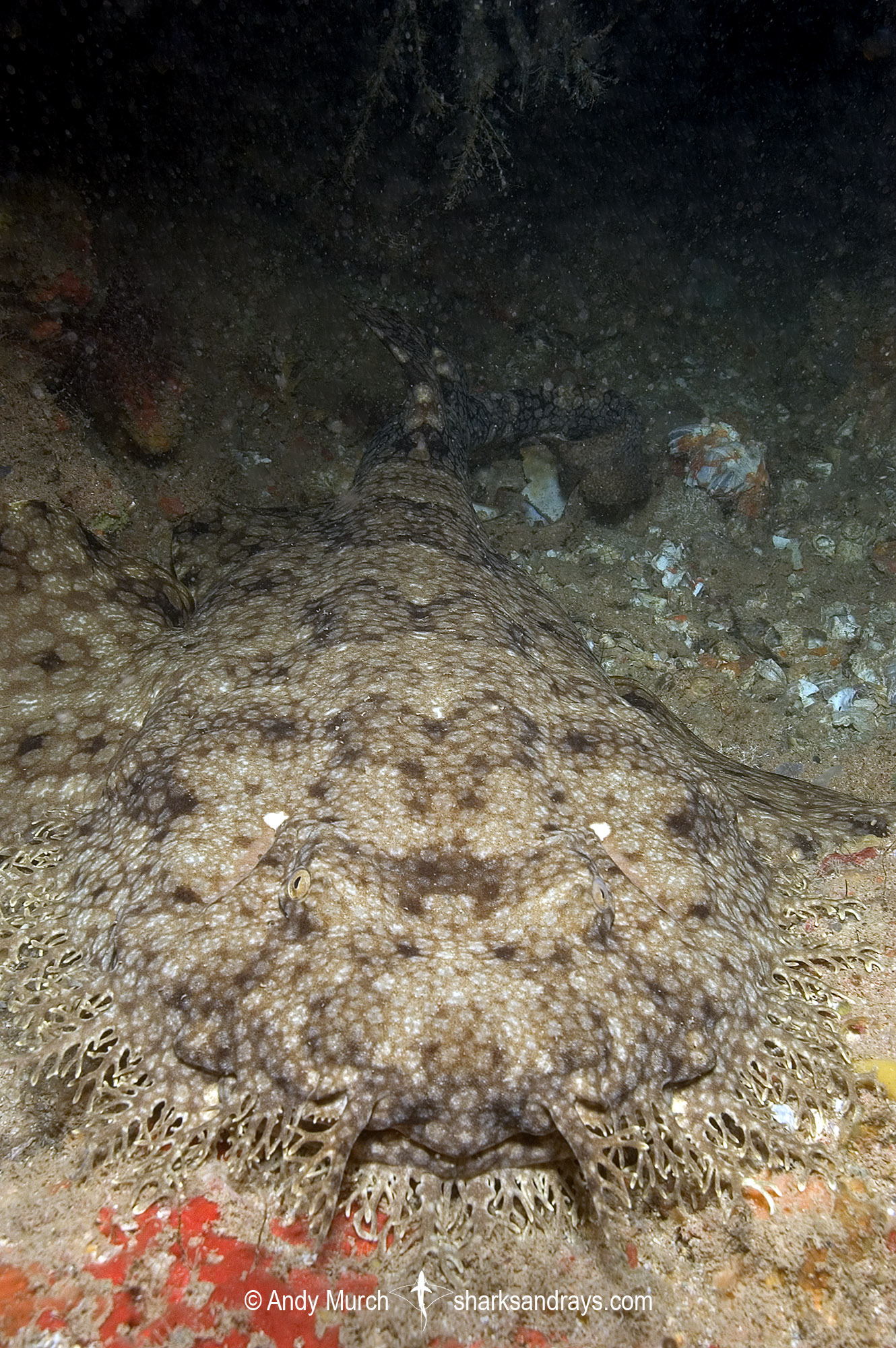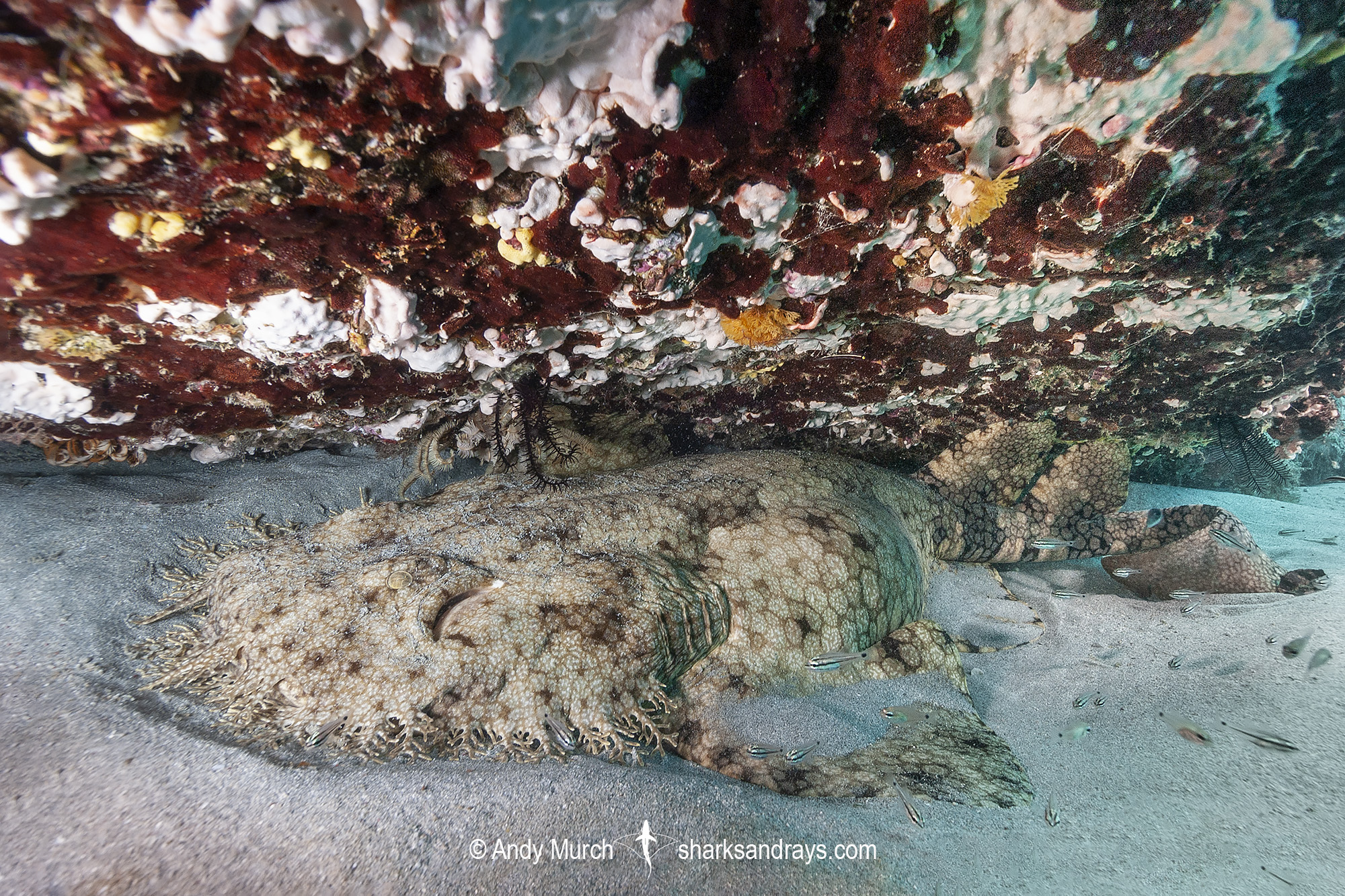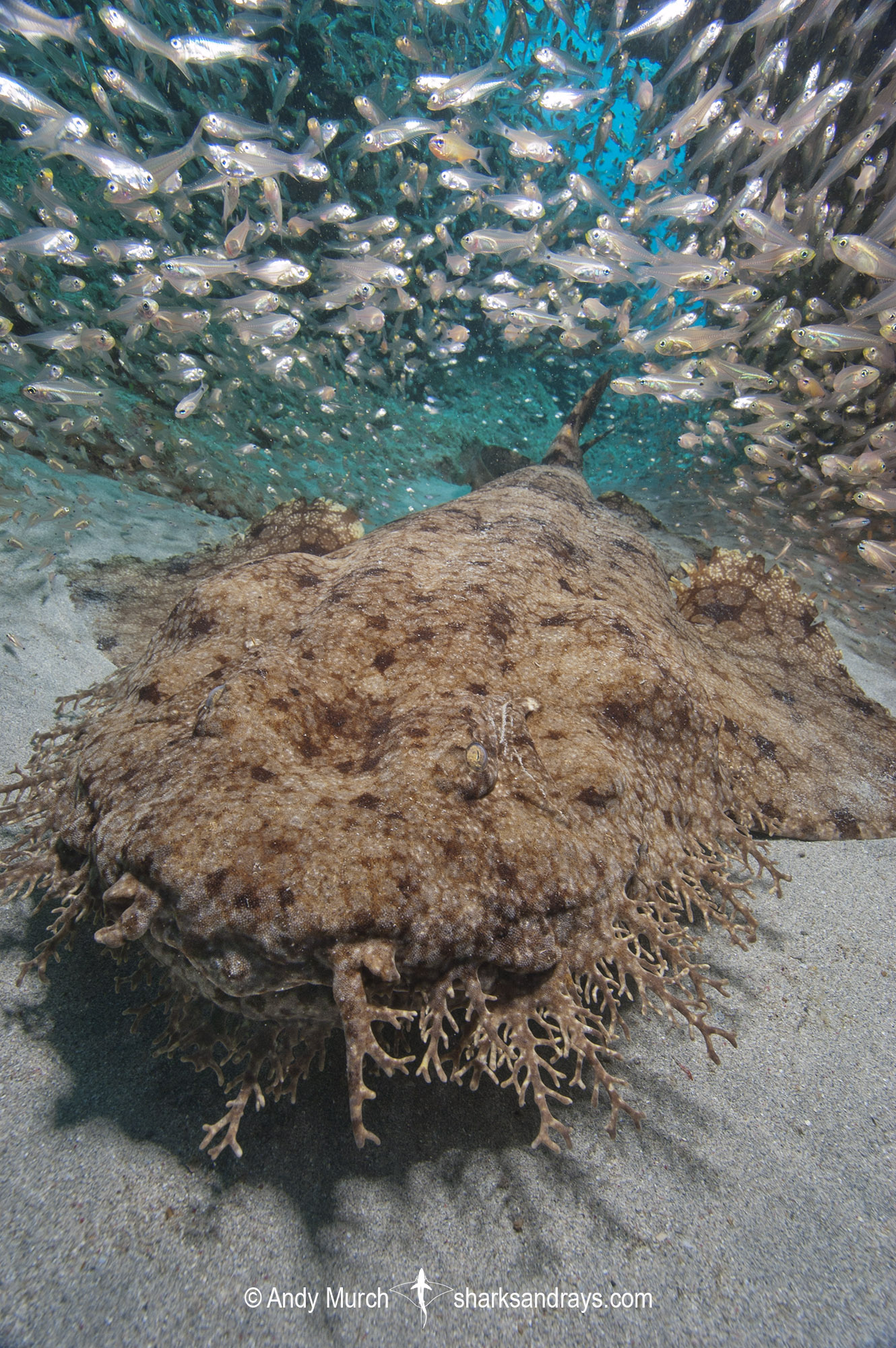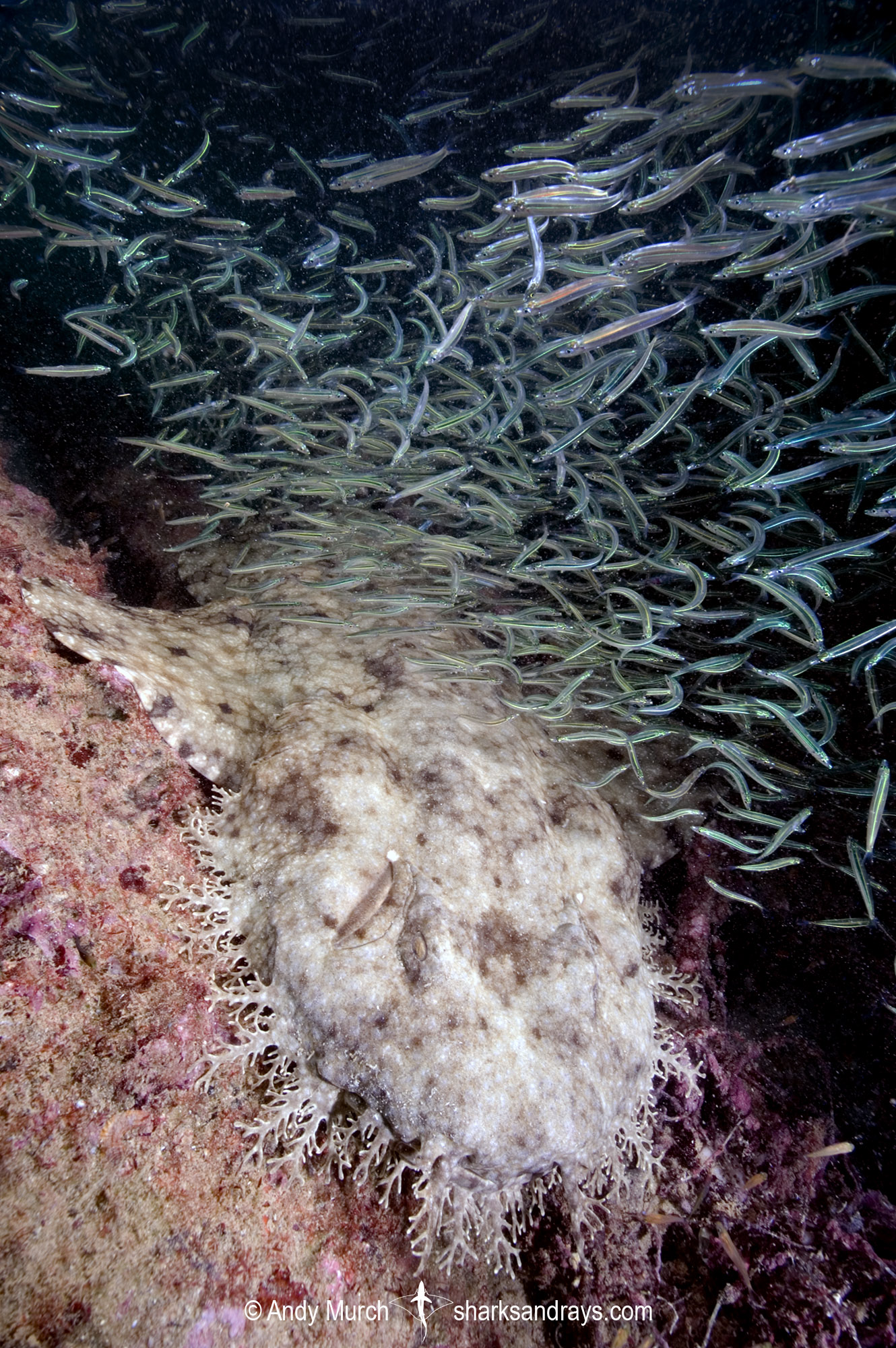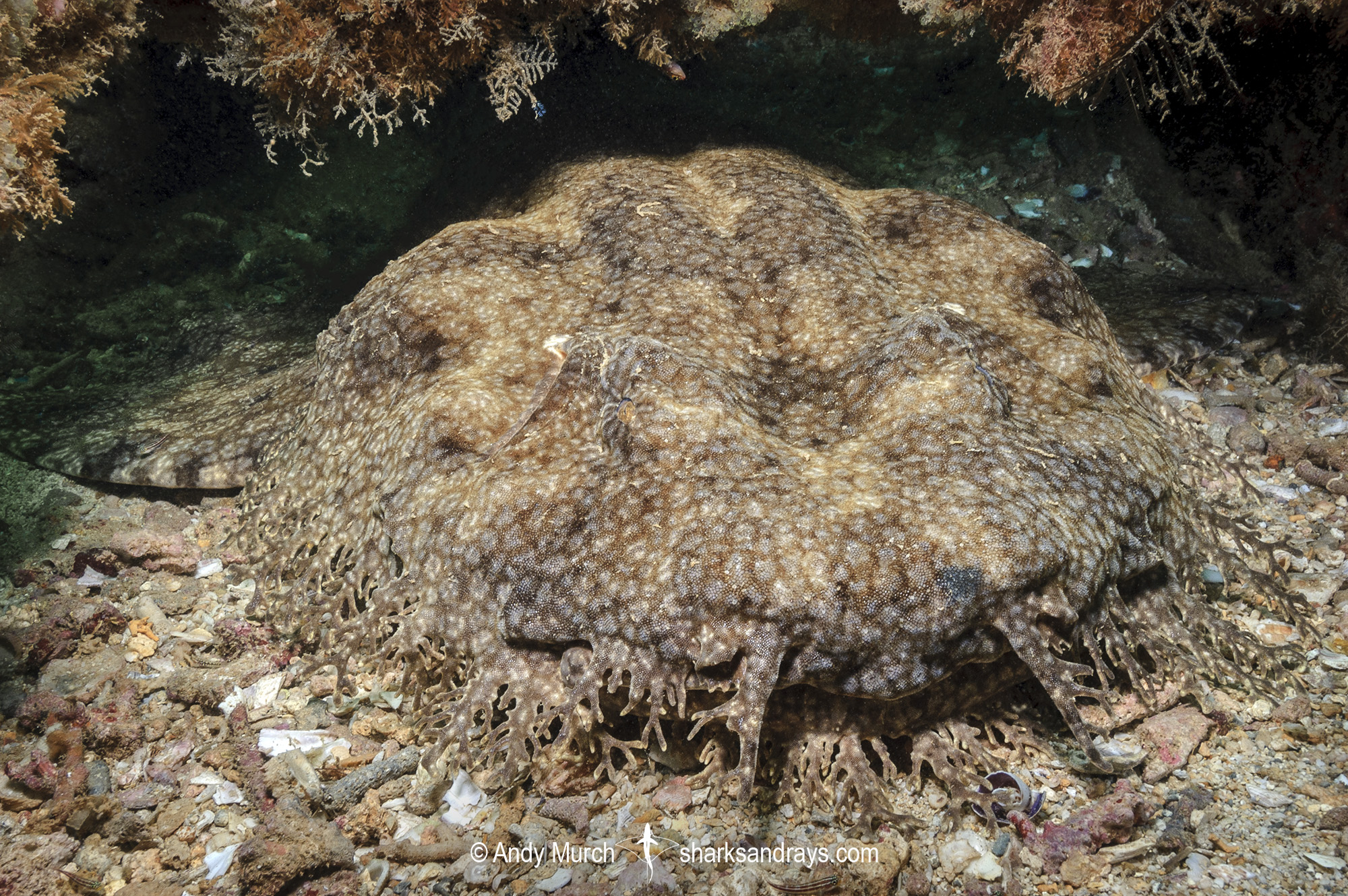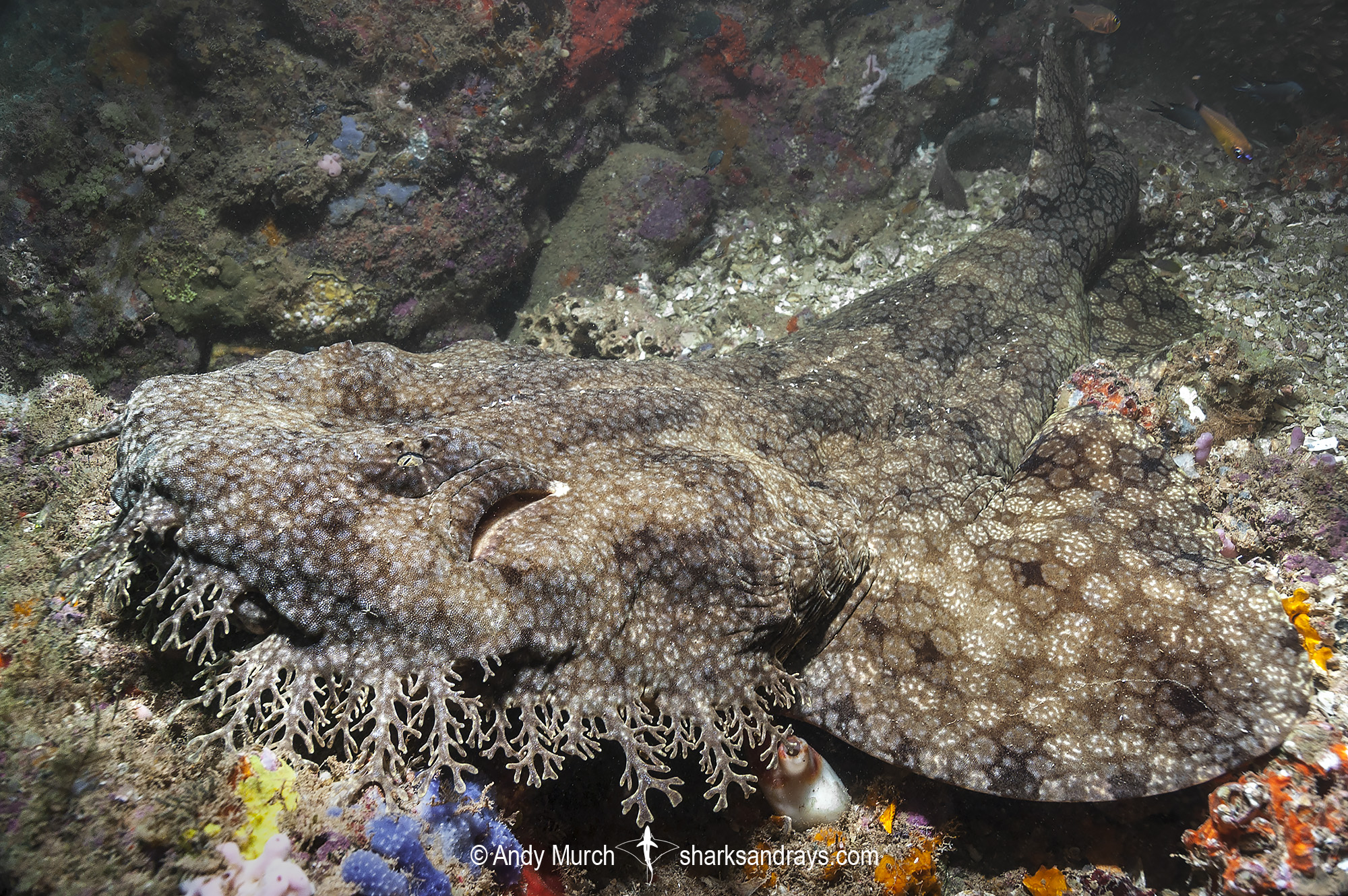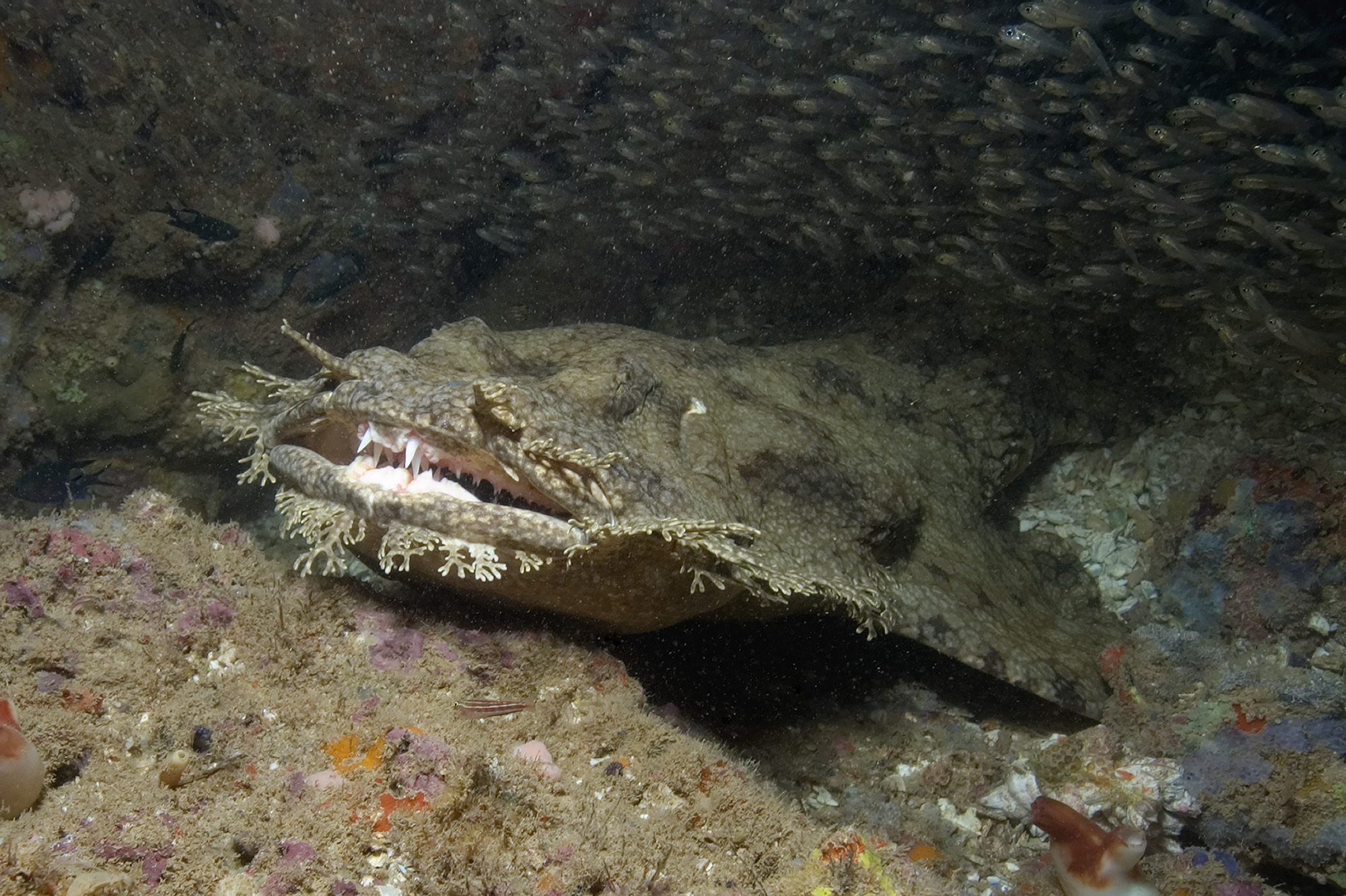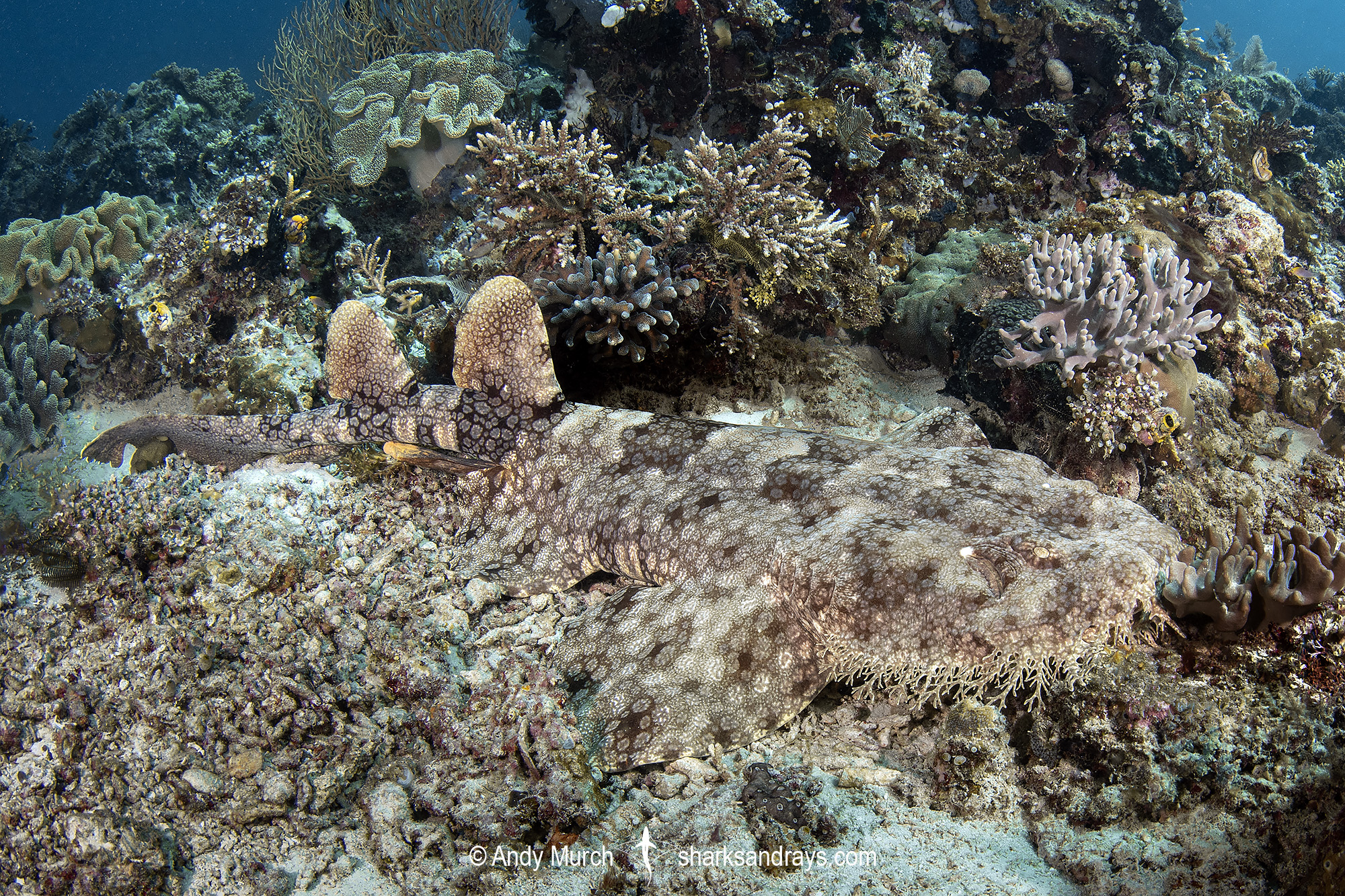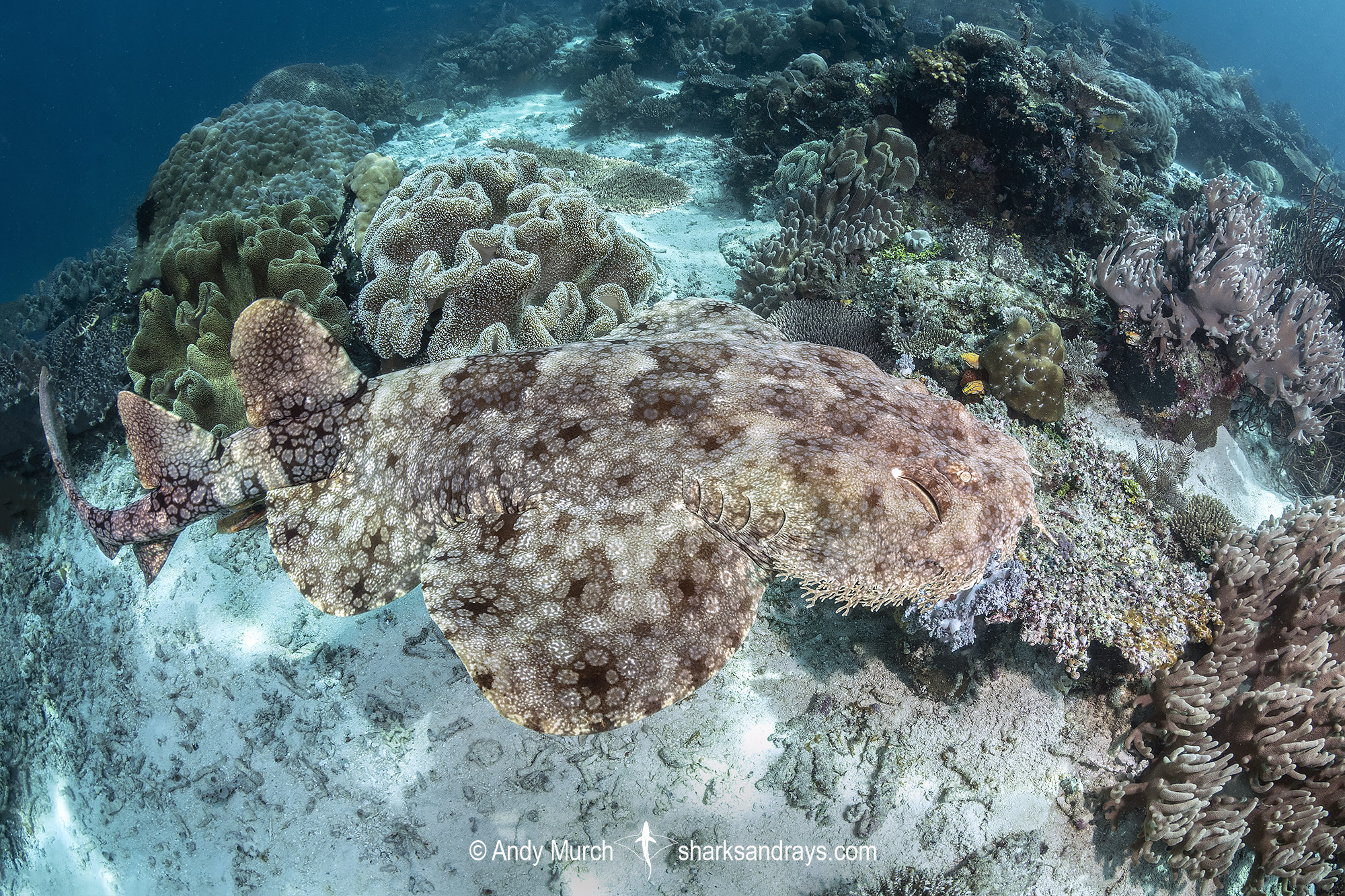Common names
Tasselled Wobbegong.
Binomial
Eucrossorhinus dasypogon.
Synonyms
Crossorhinus dasypogon, Crossorhrinus dasypogon, Eucrossohrinus dasypogon, Eucrossorhinus ogilbyi, Orectolobus dasypogon, Orectolobus ogilbyi.
Identification
Laterally depressed (flattened) body. Extremely wide head with a complex arrangement of branching skin flaps that form a beard-like, unbroken fringe that continues to the origins of the pectoral fins. Pectoral and pelvic fins very large and rounded. Two large similarly sized dorsal fins with rounded tips, set far back on body. Origin of first dorsal level with pelvic fin insertion.
Dorsal pattern composed of intricate light and dark spots (often containing many tiny pale flecks) over a brown, grey, and beige background. Spots usually form dark saddles along midline. Markings may be pale and/or indistinct on some animals.
Size
Maximum length 125cm. One record of a 366cm specimen is almost certainly a misidentification. Size at birth approximately 20cm.

Conservation Status
LEAST CONCERN
The tasselled wobbegong is not a targeted species and bycatch in commercial fisheries low due to its preffered coral habitat. There is concern that all demersal shark species in New Guinea are being affected by reef destruction and pollution, but there is no evidence that this species has undergone significant declines.
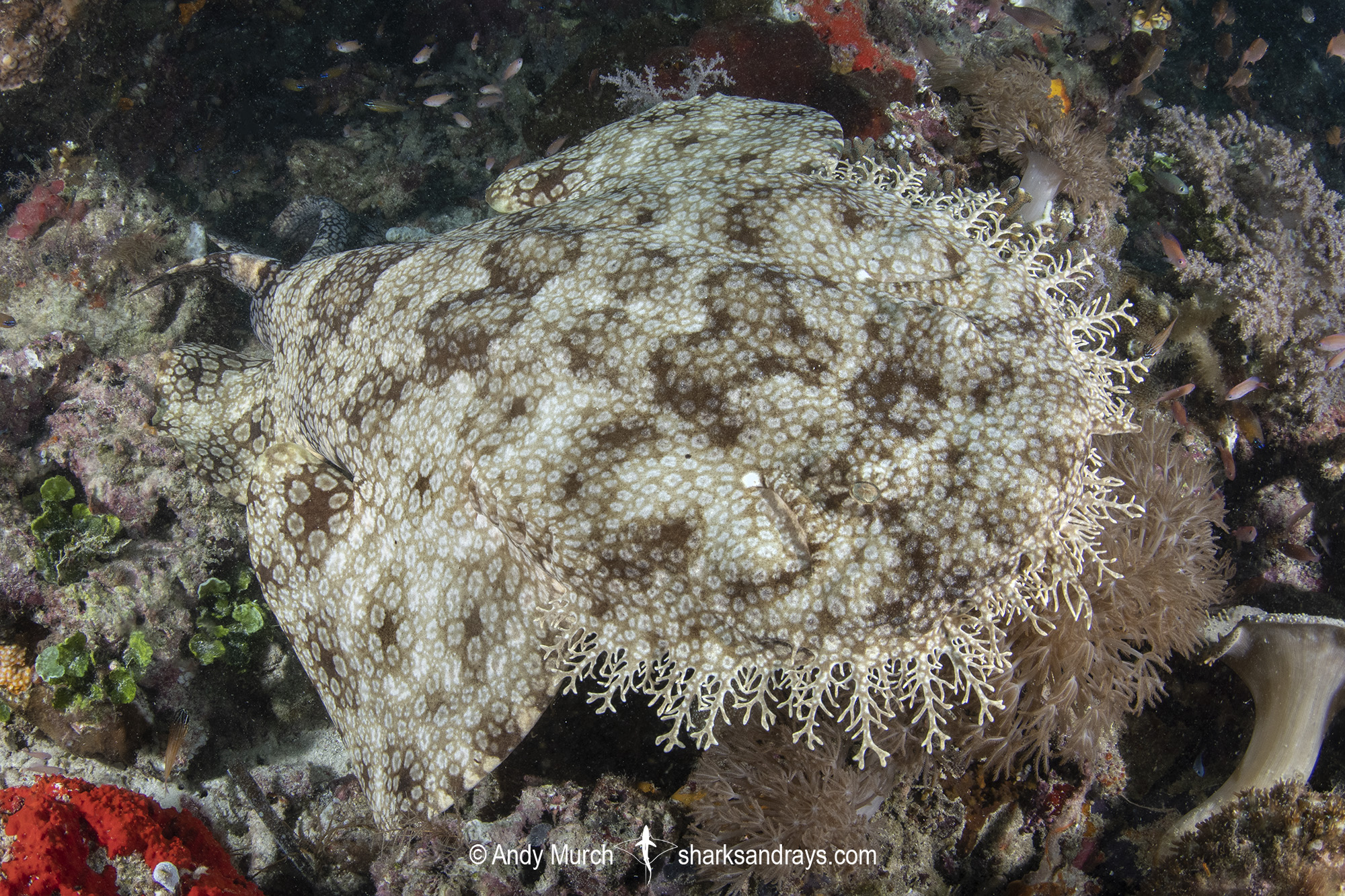
Habitat
Tropical coral reefs and rocky reefs, sand flats adjacent to reefs, and caves. From shallow bays to 50m or more.
Distribution
The tasselled wobbegong is common in New Guinea from Raja Ampat to PNG, and from Ningaloo Reef in northern Western Australia, around the north coast of Australia to Bundaberg in southern Queensland.
Reproduction
Ovoviparous. Presumed lecithotrophic, i.e. the foetus is solely nourished by the yolk within the egg case.
Diet
Feeds on small fishes that it ambushes by remaining motionless while camouflaged against the reef. When an appropriately sized fish swims in front of its disguised mouth, the wobbegong lunges forward simultaneously stretching its mouth open. The process sucks water and fish into its maw, which immediately snaps shut again, piercing its prey with needle-like teeth.
Behavior
Nocturnal. Rests by day (often with its tail curled in a spiral) under shaded reef ledges or in caves. The tasselled wobbegong’s range is generally quite small. Based on personal observations of tasselled wobbegongs that seemed to be in exactly the same spot on numerous dives, it is possible that this species remains motionless for multiple days.
Reaction to divers
Very easy to approach. Tasselled wobbegongs occasionally bolt if approached too quickly or if they are out in the open, but they are more likely to remain motionless, relying on the excellent camouflage.
Diving logistics
Tasselled wobbegongs are easily located at numerous dive sites throughout Raja Ampat in Indonesia. At many sites, it is not uncommon to see four or five on a single dive.
Triton Bay on the south coast of West Papua is another good spot in Indonesia for this species.
In Western Australia, the best place to find them is under the navy pier at Exmouth. They are also sighted regularly further offshore at Ningaloo Reef.
Sightings on the Great Barrier Reef are also commonplace. Two spots where tasselled wobbegongs are very common are Heron Island and Lady Elliott Island.


